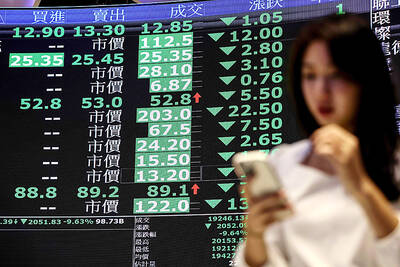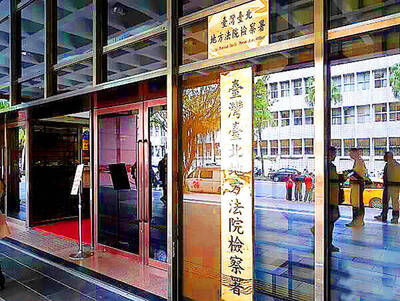US fears that an indigenous satellite launcher capability for Taiwan could help it develop longer-range missiles may have forced Taipei to abandon, or at least delay, the project, sources told the Taipei Times.
After years of relying on foreign space-launch capabilities to lift payloads into space, reports began emerging in 2008 that Taiwan’s National Space Program Office (NSPO) had long-term plans to develop an indigenous satellite and launcher for scientific use.
At the Fourth Asian Space Conference that year, a paper presented by NSPO officials said the agency’s first choice to launch FORMOSAT-6, a micro-satellite under development to carry out scientific investigation, would be the Taiwan Small Launch Vehicle (TSLV).
Another paper presented at the same conference by engineers from various Taiwanese universities said the Taiwan Universities United Satellite NO. 1A, a scientific satellite developed by NSPO in conjunction with a consortium of Taiwanese universities, was expected to be launched by the TSLV, built by the Chung-Shan Institute of Science and Technology (CSIST, 中山科學研究院), into a circular orbit of 500km and at 21 degree inclination.
A cable from the American Institute in Taiwan (AIT) dated April 6, 2009, reported that then-NSPO director-general Miau Jiun-jih (苗君易) had informed the AIT five days earlier that the agency’s long-term plan called for Taiwan to develop an indigenous satellite and launcher and that Taiwan was “very keen for US reaction to that plan.”
The cable said Miau had told the AIT that the TSLV would be locally built in cooperation with CSIST and used to propel locally made satellites weighing between 50kg and 200kg into orbit. A test launch for a 50kg satellite — very likely FORMOSAT-6 — was scheduled for next year to collect data on disaster management and environmental observation.
Based on the lack of progress in developing a TSLV, it appears the US reaction to the plan was negative. US analysts have told the Taipei Times that the involvement of CSIST, the Ministry of National Defense’s principal research and development institution, in the TSLV project, as well as Taiwan’s decision to proceed with the development of the Hsiung Feng-IIE (HF-2E) land-attack cruise missile, may have ensured US opposition to the plan.
According to an October 2009 report by Defense News, in the middle of 2006 the US Department of State began requesting end-user certificates for all export items destined for CSIST and AIT officials were instructed to obtain permission prior to meeting anyone from the research institute. Sources said the intent was to destroy Taiwan’s ability to develop an indigenous missile program, specifically the 600km range HF-2E, and “appease Beijing.”
In January the same year, Taiwan announced it had built three prototypes of the missile and intended to start mass production. US opposition to Taiwan’s missile program was such that a defense expert has linked the development of the HF-2E to Washington’s initial decision to turn down a request by Taipei for 66 F-16C/D aircraft. It is also alleged that a head of CSIST was denied a visa to the US in retaliation for the development of the missile.
The US government regards the HF-2E as an offensive weapon and therefore against the spirit of the Taiwan Relations Act, which stipulates US assistance to Taiwan for weapons and services of a “defensive character.”
Taiwan argues it needs a counterforce arsenal to deter China and to retaliate against missile launch sites in case of attack.
Late last year, the Ministry of National Defense announced it was about to embark on mass production of the HF-2E.
Under Missile Technology Control Regime regulations, and to prevent an arms buildup in the Taiwan Strait, the US Department of State has continually blocked the transfer of missile components to Taiwan to prevent it from building smaller warheads and achieving longer range.
The possible military derivatives associated with the TSLV, especially in achieving delivery of heavier payloads over a longer range for its indigenous missiles, are believed to have played a major role in the US’ decision not to support the NSPO’s launcher plan.
A US official speaking on condition of anonymity said that the US Department of Defense had stayed away from Taiwan’s development of space launch capability, adding that this article’s assessment of US apprehensions over the launcher program, CSIST’s role in it and possible military uses was “correct.”
Asked for comment, AIT spokesperson Christopher Kavanagh said AIT employees and US officials had regular contacts with a broad range of organizations in Taiwan, including CSIST.
However, citing policy on WikiLeaks, Kavanagh would not comment on material included in the AIT cable relating to the NSPO plans for satellite launcher capability. He also declined to confirm whether a visa application by the head of CSIST had been denied.
Taiwan's interest in developing the TSLV appears to have since evaporated.
Contacted for this article, NSPO Deputy Director-General Yu Shiann-jeng (余憲政) said the development strategy at his organization was to concentrate resources on the FORMOSAT-5 and FORMOSAT-7 programs.
“The so-called TSLV is not on the development agenda,” he said in an e-mailed response on Friday, comments that would contradict remarks quoted in the AIT cable by Miau in 2009.
The FORMOSAT-5 is scheduled to be launched by Space Exploration Technologies Corp, a US space transport firm, in 2014 on board a Falcon-1e launch vehicle, while FORMOSAT-7, a joint venture between Taiwan and the US and which would replace the ageing FORMOSAT-3, is under review at the National Science Council.
The launch date for FORMOSAT-6 appears to have been pushed to 2013 or 2014, reportedly as a result of bureaucratic delays and funding inadequacies.

Intelligence agents have recorded 510,000 instances of “controversial information” being spread online by the Chinese Communist Party (CCP) so far this year, the National Security Bureau (NSB) said in a report yesterday, as it warned of artificial intelligence (AI) being employed to generate destabilizing misinformation. The bureau submitted a written report to the Legislative Yuan in preparation for National Security Bureau Director-General Tsai Ming-yen’s (蔡明彥) appearance before the Foreign Affairs and National Defense Committee today. The CCP has been using cognitive warfare to divide Taiwanese society by commenting on controversial issues such as Taiwan Semiconductor Manufacturing Co’s (TSMC, 台積電) investments in the

HELPING HAND: The steering committee of the National Stabilization Fund is expected to hold a meeting to discuss how and when to utilize the fund to help buffer the sell-off The TAIEX plunged 2,065.87 points, or 9.7 percent, to close at 19,232.35 yesterday, the highest single-day percentage loss on record, as investors braced for US President Donald Trump’s tariffs after an extended holiday weekend. Amid the pessimistic atmosphere, 945 listed companies led by large-cap stocks — including Taiwan Semiconductor Manufacturing Co (TSMC, 台積電), Hon Hai Precision Industry Co (鴻海精密) and Largan Precision Co (大立光) — fell by the daily maximum of 10 percent at the close, Taiwan Stock Exchange data showed. The number of listed companies ending limit-down set a new record, the exchange said. The TAIEX plunged by daily maxiumu in just

INVESTIGATION: The case is the latest instance of a DPP figure being implicated in an espionage network accused of allegedly leaking information to Chinese intelligence Democratic Progressive Party (DPP) member Ho Jen-chieh (何仁傑) was detained and held incommunicado yesterday on suspicion of spying for China during his tenure as assistant to then-minister of foreign affairs Joseph Wu (吳釗燮). The Taipei District Prosecutors’ Office said Ho was implicated during its investigation into alleged spying activities by former Presidential Office consultant Wu Shang-yu (吳尚雨). Prosecutors said there is reason to believe Ho breached the National Security Act (國家安全法) by leaking classified Ministry of Foreign Affairs information to Chinese intelligence. Following interrogation, prosecutors petitioned the Taipei District Court to detain Ho, citing concerns over potential collusion or tampering of evidence. The

‘COMPREHENSIVE PLAN’: Lin Chia-lung said that the government was ready to talk about a variety of issues, including investment in and purchases from the US The National Stabilization Fund (NSF) yesterday announced that it would step in to staunch stock market losses for the ninth time in the nation’s history. An NSF board meeting, originally scheduled for Monday next week, was moved to yesterday after stocks plummeted in the wake of US President Donald Trump’s announcement of 32 percent tariffs on Taiwan on Wednesday last week. Board members voted to support the stock market with the NT$500 billion (US$15.15 billion) fund, with injections of funds to begin as soon as today. The NSF in 2000 injected NT$120 billion to stabilize stocks, the most ever. The lowest amount it